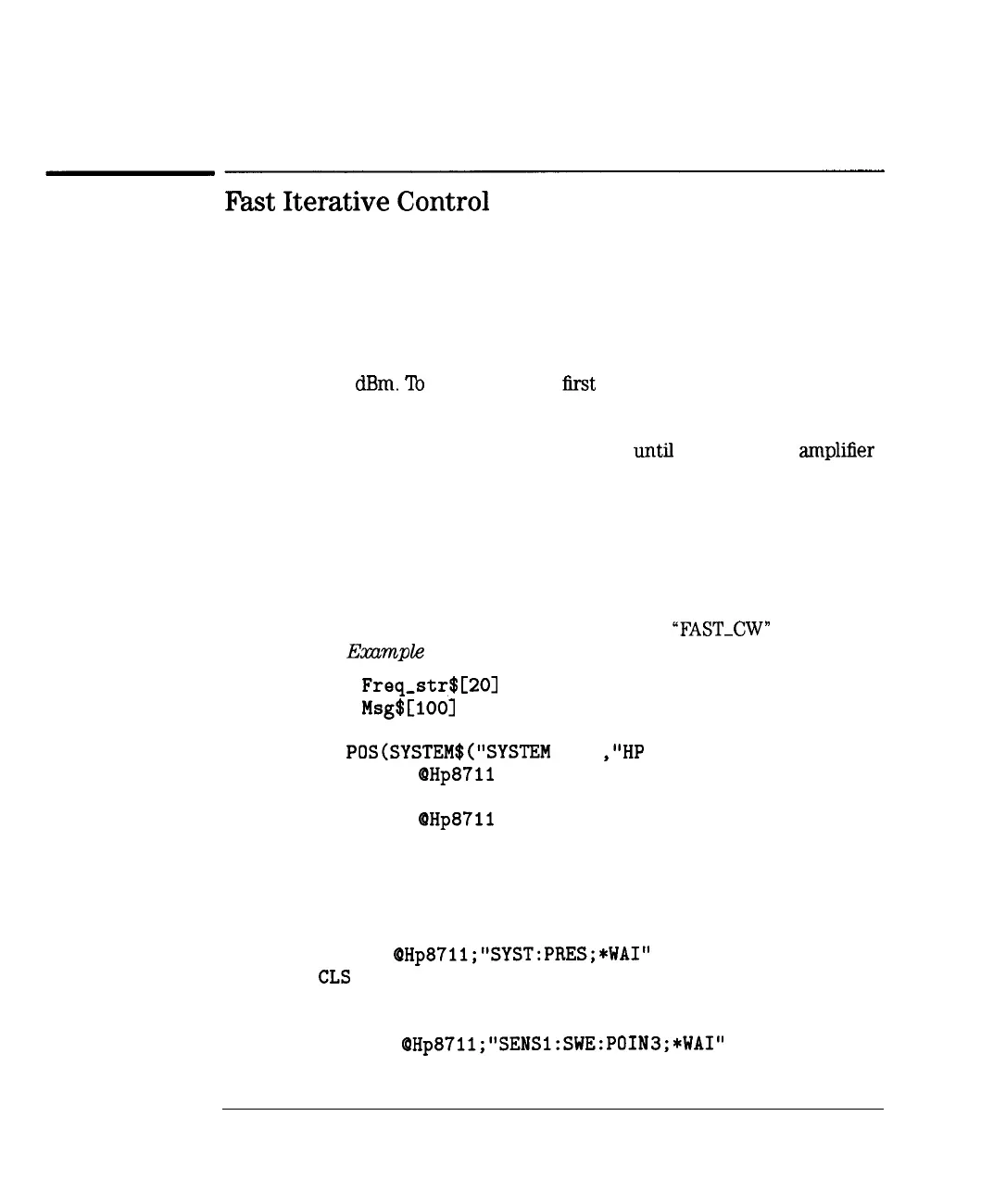I
-
Automating Measurements
Automated Measurement Setup and Control
Fast
Iterative
Control
You may want to quickly and iteratively change the analyzer’s parameters
and monitor their effect on your device under test. This section describes
how to quickly change a parameter, take a sweep, and query a marker.
For example, when measuring an amplifier, you may wish to quickly choose
the optimal input power to the amplifier which will result in a maximum
output of + 10
dBm.
lb
do so, you can
first
set the analyzer’s source power
level, then measure the amplifier’s output, and then change the analyzer’s
source power in the direction that will cause the measured signal to approach
the desired value. This process can be repeated
until
the measured
ampliher
output is within some specified range of the target value.
When data at only a single frequency is needed, you can achieve the fastest
possible sweep by selecting a CW frequency and setting the number of points
to the minimum value of 3. A SCPI marker command can be used to read the
trace value.
Using this approach, you can typically achieve 3 to 5 sweeps per second.
Following is a listing of an example program named
“FASTCW”
that can be
found on your
Ex.xmple
Programs Disk.
100
DIM
Freq,str$
C201
110
DIM
Msg$
Cl001
120
!
130
IF
POS(SYSTEM$(“SYSTEM
ID”)
,“HP
871”) THEN
140
ASSIGN
6Hp8711
TO 800
150
ELSE
160
ASSIGN
OHp8711
TO 716
170
ABORT 7
180
CLEAR 716
190
END IF
200
!
210
! PRESET, to ensure known state.
220
OUTPUT @Hp871l;“SYST:PRES;*HAI”
230
CLS
240
!
250
! Set up the analyzer to measure 3 data points.
260
OUTPUT
OHp8711;“SENSl:SWE:POIN
3;*HAI”
270
!
7-50
